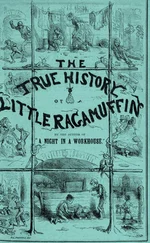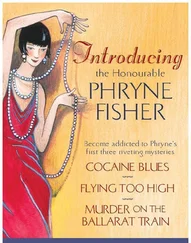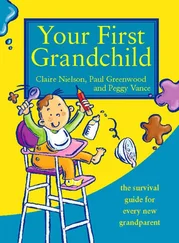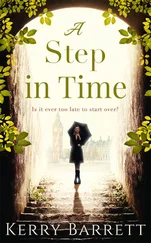Kerry Greenwood - Tamam Shud
Здесь есть возможность читать онлайн «Kerry Greenwood - Tamam Shud» весь текст электронной книги совершенно бесплатно (целиком полную версию без сокращений). В некоторых случаях можно слушать аудио, скачать через торрент в формате fb2 и присутствует краткое содержание. Город: Sydney, Год выпуска: 2012, ISBN: 2012, Издательство: NewSouth, Жанр: Детектив, Прочая документальная литература, на английском языке. Описание произведения, (предисловие) а так же отзывы посетителей доступны на портале библиотеки ЛибКат.
- Название:Tamam Shud
- Автор:
- Издательство:NewSouth
- Жанр:
- Год:2012
- Город:Sydney
- ISBN:978-1-742-23350-5
- Рейтинг книги:3 / 5. Голосов: 1
-
Избранное:Добавить в избранное
- Отзывы:
-
Ваша оценка:
- 60
- 1
- 2
- 3
- 4
- 5
Tamam Shud: краткое содержание, описание и аннотация
Предлагаем к чтению аннотацию, описание, краткое содержание или предисловие (зависит от того, что написал сам автор книги «Tamam Shud»). Если вы не нашли необходимую информацию о книге — напишите в комментариях, мы постараемся отыскать её.
Tamam Shud — читать онлайн бесплатно полную книгу (весь текст) целиком
Ниже представлен текст книги, разбитый по страницам. Система сохранения места последней прочитанной страницы, позволяет с удобством читать онлайн бесплатно книгу «Tamam Shud», без необходимости каждый раз заново искать на чём Вы остановились. Поставьте закладку, и сможете в любой момент перейти на страницу, на которой закончили чтение.
Интервал:
Закладка:
It sounds like a fuck-up to me and I entirely agree with the proposition that if you have a choice between seeing something as a conspiracy or as a fuck-up, you should always go with the fuck-up. But there may be something in the idea. Perhaps the idiots who killed Somerton Man so clumsily took out poor little Clive Mangnoson, as well, and drove his father mad. We still don’t know what killed that poor little child but small children are fragile creatures and they have always been easy to kill.
Before that, another body had been found on Somerton Beach. The South Australian Register reports that on 12 January 1881 an inquest was held on a man who was found dead by a couple looking for some privacy in the sand dunes. Witnesses had seen the man, heavily clothed for the weather, walking along the beach on 6 January ‘looking despondent’. Nothing more was known of him until the lovers found him on 10 January, by which time he had decomposed so far as to be unrecognisable. The man had with him a bloody razor and a knife, both of which would be ‘most inconvenient for inflicting the wound on the throat’. The Coroner brought in an open verdict, having decided that there was not enough evidence to point to suicide, although he thought it probable. Like Somerton Man, this man was never identified.
The death of Somerton Man has also been linked to a suicide by poisoning. A certain Joseph or George Saul Haim Marshall was found dead in Mosman in Sydney with a copy of The Rubaiyat on his chest. He was the brother of a famous barrister called David Saul Marshall, who was Chief Minister of Singapore. The presence of The Rubaiyat at both Marshall’s and Somerton Man’s deaths strikes me as coincidental in the highest degree. To my mind, Marshall’s suicide seems more likely to be an example of the Werther Effect. In the late eighteenth century, hundreds of young men read The Sorrows of Young Werther , a long, soggily romantic, Gothic, self-pitying and very boring novel by the poet Goethe, and then killed themselves in the same way that Young Werther did. Similarly, The Rubaiyat might have supported or comforted a potential suicide, since Khayyam’s conclusion is that this life is all there is, and once over, it is over forever – a philosophical position that might convince the suicide that the pain they were feeling would finally stop.
Commentators on the Tamam Shud case have also noted that Jestyn gave Alf Boxall a copy of The Rubaiyat in Clifton Gardens, which is close to Mosman, and that a woman called Gwenneth Dorothy Graham, who testified at the Marshall inquest on 15 August 1945, was found thirteen days later, naked in a bath with her wrists slit but no Rubiayat on her chest. Her death may have been the result of a a suicide pact with Marshall but drawing a connection with the death of Somerton Man seems to be stretching coincidence too far. In short, with the possible exception of the Mangnoson case, the other cases most commonly compared to the Tamam Shud murder seem to shed no light on the death of Somerton Man.
What then, you might ask, can modern forensic science tell us about him? The scientists must be able to tell us something, I hear you insisting. After all, they’d clear it up in fifty-seven minutes on CSI . Well, let’s see.
In March 2009, Professor Derek Abbott, Director of the Centre for Biomedical Engineering at the University of Adelaide, set up a task force of geeks hoping to solve the mystery. Their website is a joy, even if you know no mathematics, which I don’t. But although their enthusiasm is charming, even they have not cracked the Tamam Shud code – and if they haven’t done it I believe it cannot be done without further information.
When Professor Abbott researched Somerton Man’s Kensitas cigarettes, which had been placed in an Army Club packet, he discovered that the Kensitas were actually the more expensive brand. This seems an odd thing to do. Usually, people transfer cheaper cigarettes into an expensive packet out of swank, on the same principle as decanting cask wine into expensive bottles. (You’re not fooling anyone with that, by the way). On the other hand, it is not uncommon for someone to offer a down-on-his-luck mate a handful of cigarettes to fill up their own empty packet. I have done it myself. It isn’t as insulting as just handing them the whole packet as though it was a charitable donation. So Professor Abbott’s discovery raises the possibility the poison might have been given to Somerton Man in the form of a cigarette. And inhaling the poison might have changed its effects. Maybe an inhaled poison wouldn’t cause one to throw up.
Professor Abbott also looked at our man’s teeth, such as were left of them, and found that Somerton Man had hyperdontia of the lateral incisors, a genetic disorder that is only apparent in 2 per cent of the population, making it both rare and significant. Although his body is buried, we have photographs and a cast of Somerton Man’s upper body, allowing us to establish that he also has unusual ears.
Back when Bertillon was setting up his system of physical measurement, which preceded fingerprinting, it had already been noticed that ear shapes could be classified in the same way as fingerprints – although the classification of ears is not as useful, because there are comparatively few ear prints found at crime scenes. (It does occasionally happen, however. One of my clients left behind most of one ear when he dived through a window to escape pursuit, though that resulted in a jigsaw puzzle game called ‘match the missing body part’, rather than an expert examination of prints.) Ear prints can sometimes be found on walls and on windows but they have not been as widely accepted as fingerprints and they have been rejected as evidence in the US courts. However, they are, if not unique, pretty distinctive.
A forensic anthropologist Maciej Henneberg, Professor of Anatomy at the University of Adelaide, has provided an analysis of Somerton Man’s ears, establishing that he has an upper hollow, called a cymba, which is bigger than the lower hollow, the cavum. My sister Janet has ears like this with very short lobes, which made piercing her ears painful. (This does not, by the way, mean I believe that we are related to Somerton Man.) The more usual model is the other way round, an ear with a larger cavum and a smaller cymba.
This combination of hyperdontia and an unusually shaped ear appears in photographs of the son of Jestyn/Teresa Powell. Somerton Man had her phone number in his Rubaiyat and his body was found just below her house. Was he the father of Teresa’s son as the media has suggested? Allow me to observe that this is just like them. After all, the hyperdontia and the ear shape are general family traits. Why jump straight to the conclusion that Somerton Man was Teresa’s lover and the father of her child? Why couldn’t he be her brother or uncle or cousin? Nothing brings out the ghouls like death and sex or preferably both. It’s a truism of newspapers.
I have two reasons for disagreeing with the ghouls – a practical reason and an emotional reason. In practical terms, Teresa Powell was a nurse. She may have been surprised by an unplanned pregnancy but she was working at the Royal North Shore Hospital in Sydney and nurses knew things that many other women in 1948 didn’t, one of them being a safe place to get an abortion. If Teresa Powell didn’t want to keep that baby, she didn’t have to do so, which argues that she knew and loved the father and was sure that he would take care of both of them.
And on the emotional level, it seems unlikely that she was relying on Somerton Man, given that she already had a man to marry, as soon as his divorce came through. She may well have been in Adelaide to remove herself from temptation and make sure that Mr Johnson divorced his previous wife without any complicating factors. Under the old Matrimonial Causes Act , anyone who might be involved with a divorcee was obliged to pass the interval between the decrees nisi and absolute, as AP Herbert says, in another country. Or in a nunnery. Any suggestion of collusion and the divorce was off. I do not know whether Mr Johnson was suing for divorce or being sued and at this late date I do not propose to pry. But it is a matter of public record, and as I have referred to earlier, that he married Miss Powell in 1950 as soon as he was free to marry, and they stayed married until he died in 1995 and she died in 2007.
Читать дальшеИнтервал:
Закладка:
Похожие книги на «Tamam Shud»
Представляем Вашему вниманию похожие книги на «Tamam Shud» списком для выбора. Мы отобрали схожую по названию и смыслу литературу в надежде предоставить читателям больше вариантов отыскать новые, интересные, ещё непрочитанные произведения.
Обсуждение, отзывы о книге «Tamam Shud» и просто собственные мнения читателей. Оставьте ваши комментарии, напишите, что Вы думаете о произведении, его смысле или главных героях. Укажите что конкретно понравилось, а что нет, и почему Вы так считаете.












